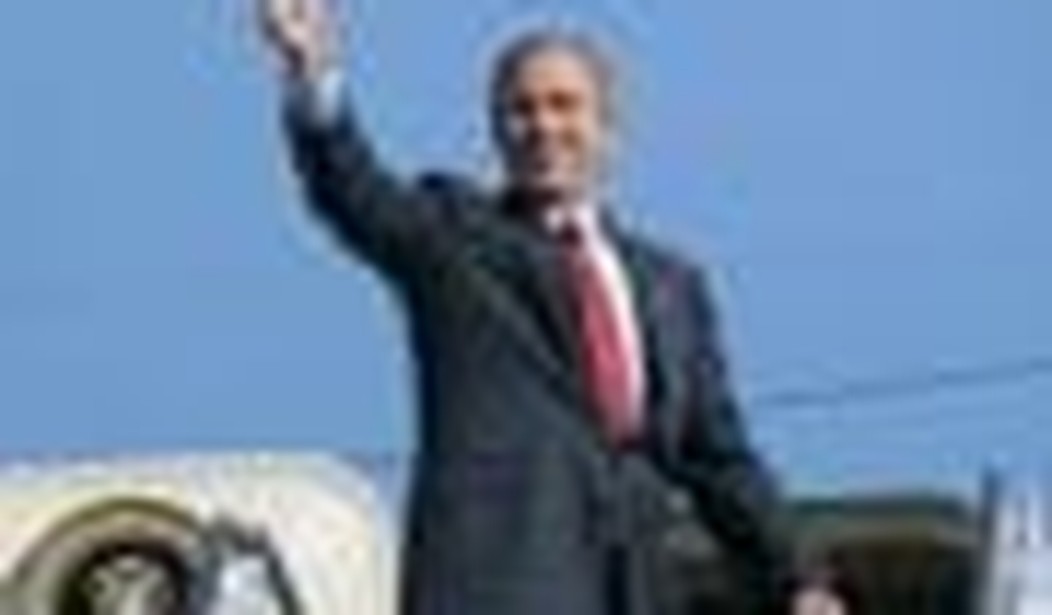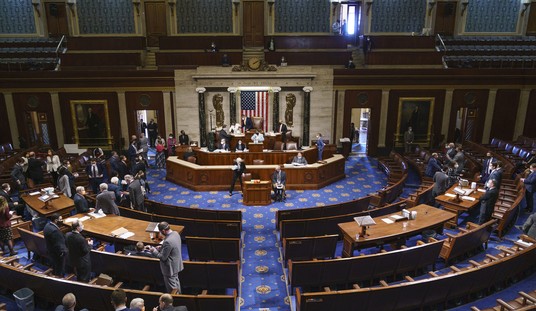Much of the world celebrated President Obama’s election and subsequent inauguration. For years, Americans have been reminded that President Bush was a reviled and loathed figure all over the globe. Friends and foes alike held particular distaste and contempt for the Texan; or, put more accurately, Bush’s sometimes cocky persona and in-your-face style turned friends into foes. By this logic, Bush was the anti-Midas: everything he touched turned into an unmitigated disaster.
Yet was it ever really this bad? How much of the criticism was accurate, and how much was politically driven and psychological? Certainly President Bush had his fair share of foreign policy blunders. Sure, he could have been more, shall we say, smooth, on a whole host of international issues. But after an open-minded and objective assessment, if one were to take a look at the contemporary state of the world, one would find that not all is wrong with it. And, in fact, George Bush deserves a large deal of credit for this reality.
Europe
Americans who routinely travel to their European ancestral homelands have grown accustomed to the anti-Bush graffiti and paraphernalia across the Old Continent. “War Monger” and “World’s Worst Terrorist” Bush t-shirts adorn European youth. How easily we forget that it was under President Clinton that we militarily intervened on European soil to prevent genocide — and didn’t appeal to Congress, or the UN, or European sensitivities beforehand. It was also under Clinton that the Europeans coined the United States a “hyper-power” to be thwarted. And, of course, it was under Clinton that Europe’s cherished Kyoto Protocol climate treaty was rejected unanimously 95-0 by the U.S. Senate.
Despite the caricatures of Bush as a twangy cowboy, our relationship with Europe today remains strong and steadfast. As we know, the initial trans-Atlantic problems arose during the buildup to the Iraq war in late 2002. But those days are long over. The two most anti-American statesmen of that era — Jacques Chirac of France and Gerhard Schroeder of Germany — are now gone, their corrupt financial ties to Saddam’s regime exposed for all to see. They were replaced by staunchly pro-American leaders like Nicolas Sarkozy and Angela Merkel.
Having suffered and survived Soviet tyranny, Eastern Europe is a bastion of pro-American sentiment — as evident in Bush’s 2007 trip to Albania, as well as new missile defense agreements with the Poles and Czechs. U.S.-EU economic ties are sturdy and the military alliance between the two continents has never been better. NATO is larger than ever and its signatories — hiking and hunting the Afghan-Pakistani tribal lands — have deployed further from European shores than at any other time in their history. On other international problems, the Bush administration followed the much-requested multilateral diplomacy, outsourcing talks with Iran to the EU-3. While I personally opposed the Bush administration’s reflexive and inadequate Iran policy, no European can in retrospect claim with a serious face, Sy Hersh-style, that Bush intended on invading or bombing the Iranians. In their lust for conspiracy, many forgot who the good guys actually were.
As for disagreements on Iraq, American protection from an increasingly belligerent Putinist Russia, not American withdrawal from an increasingly stable Iraq, is now the concern of Europe’s top billing.
Latin America
Two years ago, Latin America was on the precipice of a neo-Marxist revolution. From Venezuela, to Nicaragua, to Bolivia, to the old guard in Cuba, leftist autocrats like Hugo Chavez postured and thumped their chests with full-blown anti-American communist braggadocio. Today, collapsing oil prices have exposed the likes of Chavez as a two-bit punk desperate for the foreign cash that comes with “evil” Western globalization.
Colombia has gone from an unstable and untrustworthy neutral to arguably our greatest ally outside Israel, Australia, and the United Kingdom. Whereas the Clinton administration provided the framework to a “peace process” that gave narco-terrorist groups like FARC a 16,000-acre safe haven south of the Colombian capital — which allowed FARC to reorganize and rearm — President Bush instead aligned with the Bogotá government fully, effectively destroying the FARC insurgency.
President Uribe was the beneficiary of Bush’s Andean Regional Initiative and Andean Counterdrug Initiative, which were two programs designed not just to prevent the drug trade but to defeat the narco-rebels themselves. As the recipient of U.S. military assistance and training, Colombia happily used this partnership to strive towards the total decimation of FARC and its leadership. This once-unforeseen U.S.-Colombia alliance resulted in one of the most successful hostage rescue attempts in world history: the 2008 Colombian military operation which freed former Colombian presidential candidate Ingrid Betancourt, eleven Colombian innocents, and three American prisoners who had been held by FARC guerrillas for five years.
The operation was a total triumph — Hollywood couldn’t have written a better script — and it could not have been done without U.S. military training and technology. Other Colombian raids and incursions have exposed Venezuela’s ties, as well as those of nearly 30 other countries, to FARC killers.
Before 2001, Colombia was a failed or failing state with a distrusted military. But these successes, coupled with Bush’s $600-million-per-year Colombia economic aid plan, have brought Colombia in from the cold, solidified Colombia as a prospering free market democracy, and rolled back the Venezuelan-Bolivian-Cuban-Nicaraguan socialist axis in Latin America.
Asia
In 2002, al-Qaeda offshoot groups like Abu Sayyaf and Jemaah Islamiyah were terrorizing, kidnapping, and bombing people all across Southeast Asia, specifically the Philippines and Indonesia. Today, those terror networks have suffered from the not-so-tender mercies of a vigilant Bush administration. In others words, President Obama will not have to deal with the likes of Hambali.
During the Clinton administration, India was considered a third-world bonanza, something of a “rogue state lite,” which was to have sanctions placed on it for behavior deemed unacceptable. President Bush, on the other hand, saw India more as a stranded castaway looking for a rescue boat. For Bush, India was a natural ally of the United States: the world’s largest, multiethnic democracy, struggling to find its way into the future. The India of the 2000s — industrializing, liberalizing, and developing rapidly — reminded this administration of Teddy Roosevelt’s America, a powerful nation still searching for itself. That India is home to the world’s largest Muslim minority also convinced Bush that Islam could be compatible with freedom.
Bush signed an important civilian nuclear deal with Mumbai — the U.S.-India Nuclear Cooperation Approval and Nonproliferation Enhancement Act — and while it remains controversial for those who distrust the Indians, the joint agreement effectively cemented an all-time height in American-Indian relations. As he leaves office, Bush is immensely popular in India, and for good reason. India has catapulted from obscurity to international power in a relatively quick period of time.
No more is India merely the “crown jewel” of the old British Empire — it is now the principal South Asian powerhouse. While most of the credit should go to Indians themselves, Bush’s geostrategic and geopolitical decisions propelled this process immeasurably. Today over one billion Indians have a middle class because of a single man, retired at home on his Texas ranch. Democracy, peace, and national greatness are in India’s future, and in large part, India has George Bush to thank for that.
India was also the home turf for the Bush administration’s most important diplomatic success: avoiding full-scale war between Pakistan and India, two nuclear powers, when Pakistani terrorists attacked the Indian parliament on December 13, 2001 — and in the ensuing seven-plus years, as well.
China is a less successful story than India, but when analyzing the possibilities, still one worth hanging a hat on. Before 9/11, the U.S. defense community was organized around the theory of “China: 2025” — essentially, Red China was perceived as the Soviet Union-to-be. After the 2001 EP-3 spy plane incident, this theory seemed to be accurate. But since then, U.S.-Sino relations have been healthy and far from adversarial.
If Beijing continues to violate human rights, align itself with tyrannies across the world, and govern as a de facto dictatorship, the Chinese will surely cause greater geopolitical mischief in the not-too-distant future. But was the early caricature of George Bush ever accurate? Did Bush inflame any passions from the Chinese or grandstand them whenever he had a chance? The answer is no, he did not.
The Sino-Taiwanese standoff was handled delicately for eight years and did not break precedent. When Bush assumed office, China watchers feared for the worst. Today, the Chinese still gladly hold our debt. There was never much to sweat or fret about.
President Bush had many foreign policy failures, as stated. This much is certain; they were diligently cataloged his entire presidency. But the man also had many triumphs — humanitarian ones, at that — and we would be doing ourselves a disservice if we did not acknowledge them, or at least debate their significance. Bush the image, the perception, the cartoon, was never quite the reality. He was not a uniformed unilateralist who hated working with allies.
The former administration handled Europe, Latin America, and Asia perhaps unconventionally at times, but still as dutifully as any of its predecessors.
To be continued in part two: the Middle East and Africa.









Join the conversation as a VIP Member